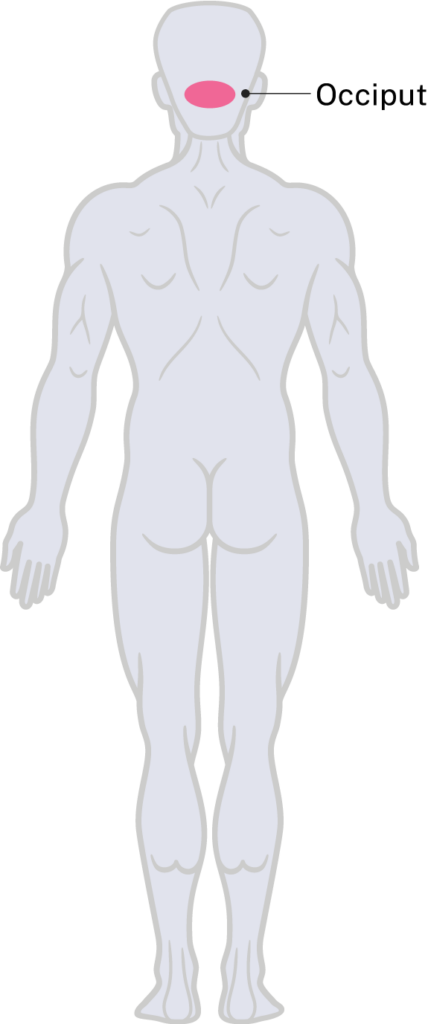Occiput
Specific risks
Immobility is the primary risk factor for occipital pressure injury, particularly in the early stages post-injury when log rolling with head support may be required.
Cervical-level injuries further increase risk due to reduced head control and limited ability to reposition or offload pressure from the occiput.
Halo braces contribute by increasing head weight and restricting movement, resulting in sustained pressure on the occipital area.
Hard cervical collars can also apply direct pressure to the occiput and should be monitored closely.
Hair care is essential to reduce pressure from matted hair and to remove any debris (e.g. soil, glass, dried blood) that may be present from the time of injury.
Assessment of the occiput should include regular palpation for early signs of tissue compromise such as ‘boggy’, soft, or tender areas..

Management of breakdown
- Offloading: Foam with occipital cut-outs can assist in relieving pressure on the affected area.
- Hair washing: Clean the hair as soon as clinically appropriate following the spinal cord injury to remove debris and contaminants from the wound area.
- Wound care: Clean the wound with an appropriate antibacterial product, apply a dressing if able, and trim hair around the wound as needed.
- Positioning: If tolerated, place the person in a side-lying position to maximise offloading of the occiput.
Check out other pressure injury locations and learn how to manage them.